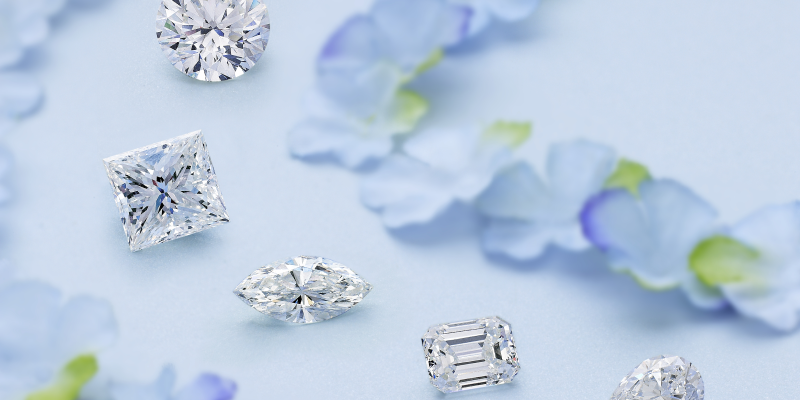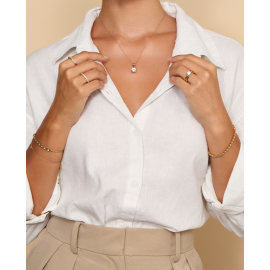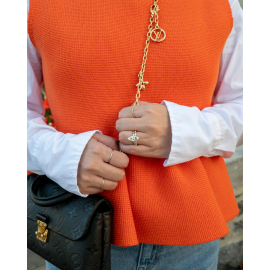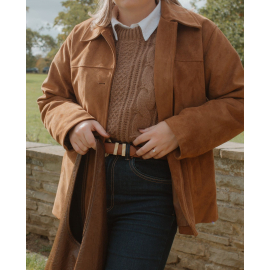Price match guarantee

We’ve teamed up with Klarna to provide flexible payment options, allowing you to shop the way you want. With Klarna, you can split your payment into 3 instalments or choose to pay later, making your shopping experience smoother and more convenient. Your order total must be between £100 and £499 to qualify.

We’ve teamed up with Klarna to provide flexible payment options, allowing you to shop the way you want. With Klarna, you can split your payment into 3 instalments or choose to pay later, making your shopping experience smoother and more convenient. Your order total must be between £100 and £499 to qualify.

May 28, 2020 | by Admin
It is law within the UK that every item of precious metal sold such as Platinum, Gold, Silver is stamped labelling the item with the type of metal it is. Platinum pieces which weigh less than 0.5 grams, 18ct Gold and Palladium pieces weighing less than 1.0 gram and Silver pieces weighing less than 7.78 grams are except from hallmark.
At Diamonds Factory all our products are hallmarked as per UK hallmarking law from London Assay Office (The GoldSmith Company)
The Goldsmiths' Company Assay Office is the oldest assay office in the United Kingdom. It has provided hallmarking services since The Goldsmiths' Company was founded in the 1300s. The company received its royal charter in 1327 and ranks 5th in order of precedence of the 12 Great Livery Companies of the City of London.
Hallmarking dates back to the 1300s when Edward I of England passed a law requiring any item made of silver, which was offered for sale, to be at least of equal quality as that of the coin of the realm (silver currency). The wardens of The Goldsmiths' Company were tasked with visiting workshops in the City of London to assay (test) silver articles. If these articles were found to be below standard they were originally destroyed and the metal forfeited to the King. If they passed, each article received the King's mark of authentication - the mark of a leopard's head. By 1478, there were several hundred workshops and merchants manufacturing silver articles in the City of London. It was not possible for the wardens to visit them all so the merchants were ordered to bring their items to Goldsmiths' Hall for testing and marking and a permanent Assay Office was established in the building. This is the origin of the term hallmark - struck with the King's mark at Goldsmiths' Hall.
In 1544 the Goldsmith's Company adopted the King's mark as their town mark and the mark of the leopard's head is now internationally recognised as the mark of this assay office.
The Goldsmiths's Company Assay Office is still based at Goldsmiths's Hall and remains the oldest company in Britain to be continually trading from the same site. However, it also has two satellite offices; at Greville Street in Hatton Garden in the heart of the London jewellery quarter and within a high security complex near London's Heathrow airport. It now has a new off-site facility within the Dalston-based jewellery manufacturer, Allied Gold. This is the first time in the Assay Office's 700 year history that it has opened permanent hallmarking services on a customer's premises.
In addition to hallmarking, the office has now expanded its range of services to support the jewellery trade and enforcement authorities. It offers a variety of specialist analytical services including nickel, lead & cadmium testing, antique silver dating, non-destructive compositional analysis, plating thickness measurement and a melt and assay service for scrap precious metal carried out in their fully independent on-site laboratory. Other services offered are a jewellery valuation service, laser marking, trading standards assistance, high quality photography and a comprehensive range of training and educational seminars, lectures and specialist events.






When discussing diamonds, the term 'cut' can be used to address two different things. Predominantly, cut refers to the way the diamond has been faceted and shaped by the skilled craftsman. It's also commonly used to describe the shape of the stone itself such as round brilliant, oval or marquise. If you are wondering what the different diamond shapes are, this article reveals everything you need to know.
What is the most popular diamond shape?
The most popular shape is the round brilliant. The round brilliant diamond shape has been popular since as far back as the 16th Century and now makes up for 75% of diamond rings sold globally.
When cut well, the round brilliant diamond shape offers the most sparkle and brilliance due to how its symmetry enables light to refract inside the stone. Its shape is also very versatile and pairs perfectly with any ring setting. It is unlikely the round brilliant will ever go out of fashion and will always be respected as one of the most beautiful diamond cuts.
Fancy diamond cuts
If you are after something a little more unusual, a fancy diamond cut could be a perfect choice. Now more than ever, fancy cuts have become increasingly popular, as consumers are looking for diamond shapes that are a little more unique.
Princess Cut
The princess cut diamond, created in the late ’70s, is the most popular fancy cut. It boasts a squared shape that radiates plenty of sparkle, making it a contemporary alternative to the round cut diamond.
Oval Cut
The oval cut diamond is essentially a modified version of the round brilliant. Its brilliance is comparable to that of the round shape, as it is cut similarly, with the added benefit of an elongated profile. This creates the illusion of a larger stone. Oval cut diamonds look great as a solitaire or in an intricate art-deco style setting.
Marquise Cut
Similar to the oval, the marquise cut diamond is a modified round brilliant, but more elongated with pointed ends. This cut is effortlessly elegant and boasts one of the largest surface areas out of all of the diamond shapes, making it a great choice if you want your diamond to appear bigger!
Pear Cut
Pear cut diamonds are known for their signature teardrop shape. It is thought the shape symbolises tears of joy within a relationship and is considered one of the most romantic diamond cuts of them all. This sophisticated shape looks great within vintage style settings.
Emerald Cut
The emerald cut diamond has a unique appearance as a result of step-cut faceting and a large, open table (the flat part of the stone). A high clarity grading is crucial with this shape as larger inclusions are likely to be visible within the diamond. Emerald cut diamonds are ideal for those who prefer clean, contemporary styles.
Asscher Cut
Whilst appearing similar to the emerald cut, the asscher cut presents a squarer profile, with a smaller table, giving more fire and brilliance to the stone because of the difference in proportion. A great alternative to the emerald cut if you’re looking for more sparkle.
Heart Cut
What better way to express the symbol of love than with a heart cut diamond? A dazzling and intricate cut that requires a skilled craftsman to achieve optimal brilliance, this diamond shape has a feminine and romantic quality to it. Size is crucial with this diamond cut, as anything less than 0.50ct makes it hard to appreciate its shape and profile.
Cushion Cut
The cushion cut diamond presents itself as a cross between the round brilliant and princess, with a squared shape but softer and more rounded edges. This cut has been around for almost 200 years and was extremely popular back in the 19th century before the round brilliant shape became favoured.
Radiant Cut
Arguably the least common cut, the radiant cut is generally rectangular or square-shaped. It's cut placement provides a unique brilliance that is different from its counterparts.
What diamond cut is the most expensive?
You may have guessed that, with its popularity, the round brilliant diamond shape is the priciest. Why? There are a couple of explanations for this.
Firstly, the market value for round brilliant diamonds has increased due to them being very popular and in high demand. Secondly, and perhaps more crucially, the round brilliant diamond shape has the highest number of facets and requires more precision and expertise to cut. This shape also produces the most waste, meaning a lot more excess material is cut away from the rough diamond.
Although round cut diamonds tend to be more expensive, they do offer the most fire and brilliance above any other cut.
What diamond cut is the most affordable?
The advantage of wanting something different from the norm is that it will also come at a more reasonable price. Although there is a variance between them, all fancy cuts will be a lot more forgiving financially than the ever-popular round brilliant.
The emerald and asscher cuts lead the way in affordability, with their cuts requiring less precision and generating less waste from the rough stone. As mentioned earlier, however, it is worth opting for a higher grade of clarity on these stones as inclusions and imperfections will be easier to spot.
Other fancy diamond cuts are still much cheaper than the round brilliant (up to 25% less), as they waste less of the rough stone. This can enable you to save money or get a larger stone for your budget. You will likely end up with noticeably bigger, or higher quality stone for the same price as the round brilliant.
When it comes down to it, your choice of diamond cut is largely going to depend on the recipients' taste and style. Remember that above everything else, the perfect engagement ring is one that your loved one will enjoy wearing every day.
If you’re feeling inspired why not check out our broad selection of diamond engagement rings, or head to our other article to learn how to choose the perfect engagement ring.